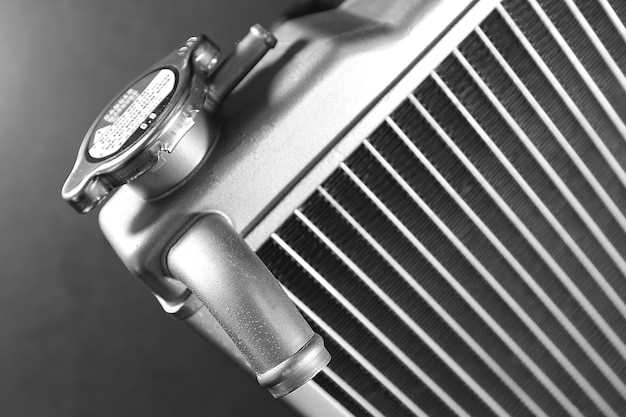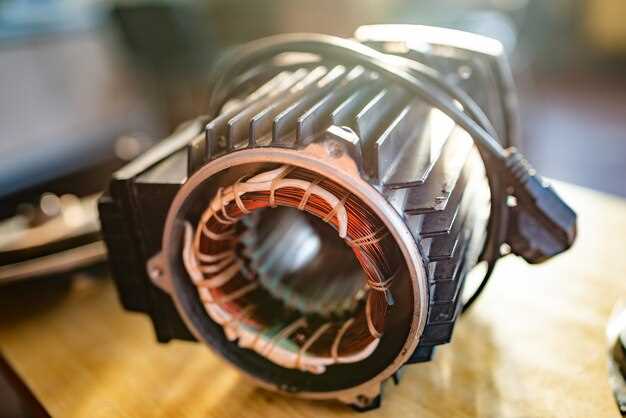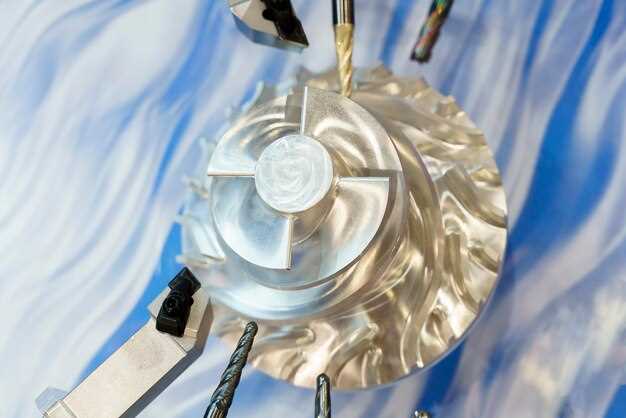
The automotive world is filled with intricate components that play vital roles in vehicle performance and efficiency. One such component is the torque converter, a crucial element in automatic transmission systems. Its primary function is to facilitate the transfer of power from the engine to the transmission while allowing for a smooth delivery of torque. Understanding how a torque converter operates can enhance one’s appreciation for modern vehicle technology and its impact on driving experience.
At its core, a torque converter is a fluid coupling device that enables the engine to continue running while the vehicle is stationary. It plays a pivotal role in converting the engine’s torque into usable power for the wheels. This conversion process is essential, as it not only improves acceleration but also enhances fuel efficiency by optimizing the engine’s performance under various driving conditions. The design and functionality of a torque converter are critical to achieving an effective balance between power delivery and drivetrain responsiveness.
In essence, the torque converter operates on the principles of fluid dynamics, utilizing a special lubricating fluid to transmit engine power. This allows vehicles to achieve smoother starts, seamless gear changes, and better overall performance. By grasping the fundamental workings of torque converters, drivers and automotive enthusiasts alike can gain deeper insights into their vehicles’ operational efficiency and performance capabilities.
How Torque Converters Enable Smooth Power Delivery
Torque converters play a crucial role in automatic transmissions by facilitating smooth power delivery from the engine to the wheels. They act as a hydraulic coupling mechanism that allows the engine to continue running while the vehicle is stationary. This is achieved through a series of components including the impeller, turbine, and stator, which work together to manage and transfer power efficiently.
When the engine generates power, it spins the impeller, which pumps transmission fluid towards the turbine. This action creates hydraulic pressure that transfers energy to the turbine, causing it to spin and ultimately transmit power to the transmission. The unique design of the torque converter enables it to multiply engine torque at low speeds, providing the necessary force to initiate motion without stalling the engine.
As the vehicle accelerates, the torque converter allows for a seamless transition in power delivery. The slipping between the turbine and impeller diminishes as vehicle speed increases, achieving a direct connection that maximizes efficiency. This feature not only enhances performance but also improves fuel economy by reducing engine load during acceleration.
The fluid dynamics within the torque converter also contribute to maintaining engine performance under varying driving conditions. Whether navigating through stop-and-go traffic or merging onto highways, the torque converter adapts to the engine’s RPM, ensuring consistent power delivery and a smooth driving experience.
In summary, torque converters are integral to the functionality of automatic transmissions, facilitating smooth power delivery through hydraulic means. Their ability to efficiently transfer and manage power ensures that drivers experience a comfortable ride regardless of driving circumstances.
Key Components of Torque Converters Explained
A torque converter is an essential component of automatic transmissions, providing the necessary torque multiplication needed for vehicle propulsion. Understanding its key components is crucial for comprehending how torque converters function and deliver power efficiently.
The main parts of a torque converter include the turbine, stator, pump, and lock-up clutch. The pump, which is attached to the engine, is responsible for drawing transmission fluid into the converter. As the engine rotates, it spins the pump, creating hydraulic pressure that forces the fluid to flow outward towards the turbine.
The turbine is connected to the transmission and receives the fluid pushed from the pump. As fluid strikes the turbine blades, it generates rotational force, translating the hydraulic pressure into mechanical power, thereby delivering torque to the vehicle’s wheels.
The stator is positioned between the pump and turbine, redirecting the fluid returning from the turbine back to the pump. This redirection ensures that the torque converter operates efficiently, preventing losses in hydraulic pressure and maximizing the torque delivery to the transmission.
Additionally, many modern torque converters include a lock-up clutch, which enables a direct mechanical connection between the engine and the transmission at higher speeds. This feature minimizes slip and enhances fuel efficiency by improving the power delivery from the engine directly to the wheels.
In summary, a torque converter’s effective operation relies on the interplay of its key components–the pump, turbine, stator, and lock-up clutch. Each part plays a vital role in transforming engine power into usable torque, ensuring that vehicles operate smoothly and efficiently.
Common Problems with Torque Converters and Their Symptoms

Torque converters play a crucial role in the power delivery system of automatic transmissions. They enable smooth acceleration by transferring engine power to the transmission. However, several issues can arise with torque converters, negatively affecting vehicle performance. Here are some common problems and their associated symptoms:
-
Transmission Slipping:
This occurs when the torque converter cannot maintain a connection between the engine and the transmission. Symptoms include:
- Engine RPM increases without a corresponding increase in vehicle speed.
- Unusual engine noises, such as whining or grinding.
- Bumps or jerks during gear shifts.
-
Torque Converter Clutch Failure:
The torque converter clutch can become stuck or fail to engage. Symptoms often include:
- High RPMs during highway driving.
- Poor fuel economy due to excessive engine load.
- Overheating of the engine or transmission.
-
Fluid Leaks:
Leaks can result from worn seals or damage to the torque converter. Symptoms include:
- Puddle of transmission fluid under the vehicle.
- Low fluid levels indicated on the dipstick.
- Unresponsive transmission or hard shifting.
-
Overheating:
Overheating can occur if the torque converter isn’t delivering power effectively. Symptoms can be:
- Warning lights on the dashboard related to transmission or temperature.
- Smell of burning fluid.
- Delayed or harsh shifting.
-
Noise Issues:
Unusual sounds may indicate internal problems within the torque converter. Symptoms can include:
- Grinding sounds when the vehicle is in gear.
- High-pitched whirring when accelerating.
- Clunking noises when engaging or disengaging gears.
Addressing these issues promptly is essential for maintaining optimal power delivery and preventing further damage to the transmission system. If you experience any of these symptoms, it’s advisable to consult a professional mechanic for a thorough evaluation.
Comparing Torque Converters to Traditional Automatic Transmissions
Torque converters and traditional automatic transmissions serve the essential function of transmitting power from the engine to the wheels, but they achieve this in fundamentally different ways. Understanding these differences is crucial for evaluating performance characteristics and overall vehicle efficiency.
A torque converter utilizes hydraulic fluid to facilitate the transfer of torque, allowing for smooth power delivery and effective coupling between the engine and transmission. It operates by using a turbine to harness engine power, converting it into usable force for acceleration. This mechanism allows for a variable gear ratio, providing better responsiveness under different driving conditions.
In contrast, traditional automatic transmissions use a series of gears and a complex planetary gear set to manage power delivery. They rely on electronically controlled gear changes to adapt to speed and engine load. While efficient in delivering power at higher speeds, they may encounter challenges during low-speed acceleration, where the torque converter shines.
| Feature | Torque Converter | Traditional Automatic Transmission |
|---|---|---|
| Power Delivery | Smooth and continuous via hydraulic fluid | Segmented through gear shifts |
| Efficiency at Low Speeds | Superior, due to effective torque multiplication | Less efficient, risk of delay in power transfer |
| Complexity | Less complex, fewer moving parts | More complex, involves multiple components for gear changes |
| Performance Under Load | Excellent torque management | May struggle under sudden load changes |
Overall, while both systems have their advantages, torque converters provide unique benefits in low-speed scenarios and offer seamless power delivery, making them a preferred choice in many applications, particularly in vehicles where smooth acceleration is critical.
Factors Affecting Torque Converter Performance

The performance of a torque converter is influenced by various factors that ultimately determine its efficiency in power delivery. Understanding these factors is essential for optimizing vehicle performance and ensuring smooth operation.
- Fluid Type: The type of transmission fluid used in the torque converter affects its ability to transfer power. High-quality, compatible fluids help maintain optimal viscosity and heat resistance.
- Converter Design: The design of the torque converter, including the size and shape of the turbine and stator, directly impacts power delivery. Advanced designs facilitate better efficiency and responsiveness.
- Lock-Up Clutch Engagement: The engagement of the lock-up clutch can enhance efficiency by eliminating slippage. Monitored precisely, it leads to improved power delivery at higher speeds.
- Engine Load: The amount of load on the engine influences converter performance. Under varying loads, the torque converter adjusts, altering how effectively it transfers engine power to the wheels.
- Temperature: Operating temperature plays a critical role in torque converter effectiveness. High temperatures can lead to fluid breakdown, reducing power delivery efficiency.
- Engine RPM: The revolutions per minute of the engine significantly impact torque converter function. At optimal RPMs, the converter operates more effectively, ensuring better power transfer.
- Vehicle Weight: Heavier vehicles require more power to move, putting additional strain on the torque converter. This strain affects how effectively it can deliver power during acceleration.
- Maintenance: Regular maintenance of the torque converter system is crucial. Neglected systems can accumulate debris and wear, resulting in decreased performance and inefficient power delivery.
By understanding these factors, vehicle owners and manufacturers can take measures to enhance torque converter performance, thereby ensuring efficient power delivery and overall vehicle reliability.
Maintenance Tips for Keeping Your Torque Converter Functioning Well
Regular maintenance is crucial for ensuring that your torque converter operates efficiently and effectively. Here are some essential tips to help you keep your torque converter in optimal condition.
1. Check Fluid Levels: Regularly inspect the transmission fluid levels in your vehicle. The torque converter relies on this fluid for proper functioning. Low fluid levels can lead to overheating and decreased performance.
2. Change Transmission Fluid: Over time, transmission fluid can become contaminated with debris and particles, affecting its ability to deliver sufficient torque. Follow your manufacturer’s recommendations for changing the fluid to ensure smooth operation.
3. Inspect for Leaks: Examine your vehicle for any signs of leaks around the torque converter and transmission. Any fluid loss can lead to inefficient torque delivery, prompting potential damage if not addressed promptly.
4. Monitor Engine Performance: Keep an eye on your vehicle’s overall performance. Unusual noises or vibrations while driving can indicate issues with the torque converter. Early detection of problems can save costly repairs down the line.
5. Maintain Cooling System: An effective cooling system is essential for the longevity of your torque converter. Ensure that the radiator and cooling lines are functioning correctly to prevent overheating, which can negatively impact torque delivery.
6. Avoid Towing Beyond Capacity: If your vehicle is not designed for heavy towing, refrain from exceeding its limits. Straining the torque converter can lead to premature wear and failure. Always adhere to the manufacturer’s towing guidelines.
7. Use Quality Parts: If repairs or replacements are necessary, opt for high-quality parts that meet or exceed OEM standards. Quality components ensure proper torque converter performance and reliability.
By following these maintenance tips, you can help extend the life of your torque converter, ensuring it continues to deliver efficient torque and enhance your vehicle’s overall performance.
